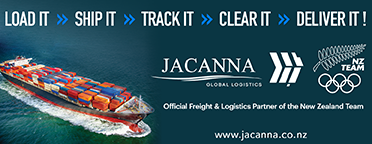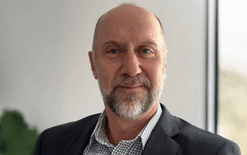Webinar tackles VIA’s future

Members of an industry organisation have learned more about how it will be transformed so it’s ready to tackle the challenges of the next 30 years.
The Imported Motor Vehicle Industry Association (VIA) hosted a webinar this morning to explain it moving away from a national executive to having a council overseeing its work and policies.
At the heart of the changes will be a new constitution with the most significant being the council’s introduction. This will be made up of a cross-section of members working collaboratively on important issues facing the industry to keep the doors open for used vehicles to be imported into New Zealand.
The new council is set to meet four to six times a year, or as needed, and will play a critical role in driving VIA forward. It will consist of between 15 and 25 members with more than half being elected.
The council will set the focus for VIA’s chief executive and team, decide on which initiatives to pursue, and determine responses to political, legislative and industry roadblocks, co-ordinate resources to support the CEO and team in times of crisis, and elect a small board of directors to which the chief executive will report. It will also elect VIA’s board of directors from its members.
David Vinsen, VIA’s chief executive, told Autofile Online he was feeling positive about the changes and those attending the webinar had been supportive of the restructure.
“We had good attendance of the industry’s key players plus plenty of people who do not usually attend special or annual general meetings,” he says. “There were more people at this Zoom meeting than we get at a normal AGM.
“Today was the culmination of a 12-month process to make the association fit for purpose going forward.
“The new council will be a formal group and become the pre-eminent body for the association. It also provides an opportunity for all members to participate and contribute and it is an exciting development for VIA.”
Vinsen, pictured, says VIA will largely “continue to do what we do, but with a greater level of transparency and accountability to the industry”.
The aim is for council members to actively participate and engage with the affairs of VIA, the council and the industry in a variety of ways.
These include applying their expertise to identify issues and create solutions, participating in industry and government work groups, bringing ideas, problems or challenges to the table, voting on new and potential VIA initiatives, and by using the forum to talk directly to the chief executive and ask questions.
How the council will work
With a cross-section of members ranked from tier one to five, seats will be proportionally allocated to each tier. Tier one is automatically allocated one seat per member. Tiers two to five vote representatives to the council and members can also nominate themselves.
Voting will take place annually, with non-council members still able to attend meetings and time given for them to raise issues and ask questions.
Before the webinar, members received information about their new annual subscriptions and membership tiers, as well as the tier and council structure. To improve the association’s financial position, some changes to the funding structure – “for most, the difference is minimal”.
Prospective candidates will get 10 days to formally stand for the council, and will need to provide a photograph and brief biography for circulation with voting packs. Members will get one week to vote electronically.
VIA’s new structure was approved at a special general meeting in March with the new structure to be formally filled at the annual general meeting on July 21.
Setting up the council
VIA’s new council will be a cross-section of its members. Those in tier one are automatically allocated one council seat, while tiers two to five vote representatives onto it. If a member wants to participate on the council, it can nominate itself for an available seat.
Seats are proportionally allocated, so tier one is one seat per member, tier two is one seat for every two members, tier three one seat for every four members, tier four one seat for every eight members, and tier five one seat for every 16 members.
A possible council with VIA’s current members could look like this. Tier one – nine members and nine seats, tier two – six members and three seats, tier three – eight members and four seats, tier four – eight members and one seat, tier five – 64 members and four seats. The association more than 100 members and the council has 21 seats.
Within that, a tier-five example is given with 64 members and four seats. Of the 64 members, six are ready and willing to participate on the council. They then become the six nominated tier-five members who contest that year’s council election. The four nominees with the most support will sit on the council for the next 12 months.
Each year, members have the opportunity to select the council by choosing their tier and nominating and voting for who they would like to represent their tier on the council (including that member).
VIA says the council is the best and most direct way for members to engage and participate. Non-council members can attend council meetings, and each council meeting will have time for non-council members to raise concerns or ask questions.
Questions and answers
In a presentation sent to members before the webinar, VIA provided answers to a number of questions that might come up. These were:
• How long is the membership subscription for? Each member has an annual, renewable subscription.
• Can I change membership tiers during the year? Since your participation in a membership tier has helped set the council structure, you are unable to move tiers for the rest of the year.
• Can I cancel my subscription during the year? We budget each year based on confirmed subscriptions, so you are unable to cancel during a membership year.
• Can I still pay the subscription monthly? Yes, you will still be able to pay monthly but a small admin fee will apply.
• Can I pick my tier? Yes, you can choose any of the five tiers. However, the board may ask you reconsider if you select a tier well below your peers.
• Can anyone be a tier-one member? Yes, if you are accepted as a VIA member and pay the tier-one annual subscription, you will be a tier-one member.
• Who does the chief executive report to? The CEO works collaboratively with the council and takes direction from them, but is ultimately held responsible by and reports to the elected board.
• Will any of the existing services provided change? Only after the new council has met to discuss priorities for VIA will any changes be made.





